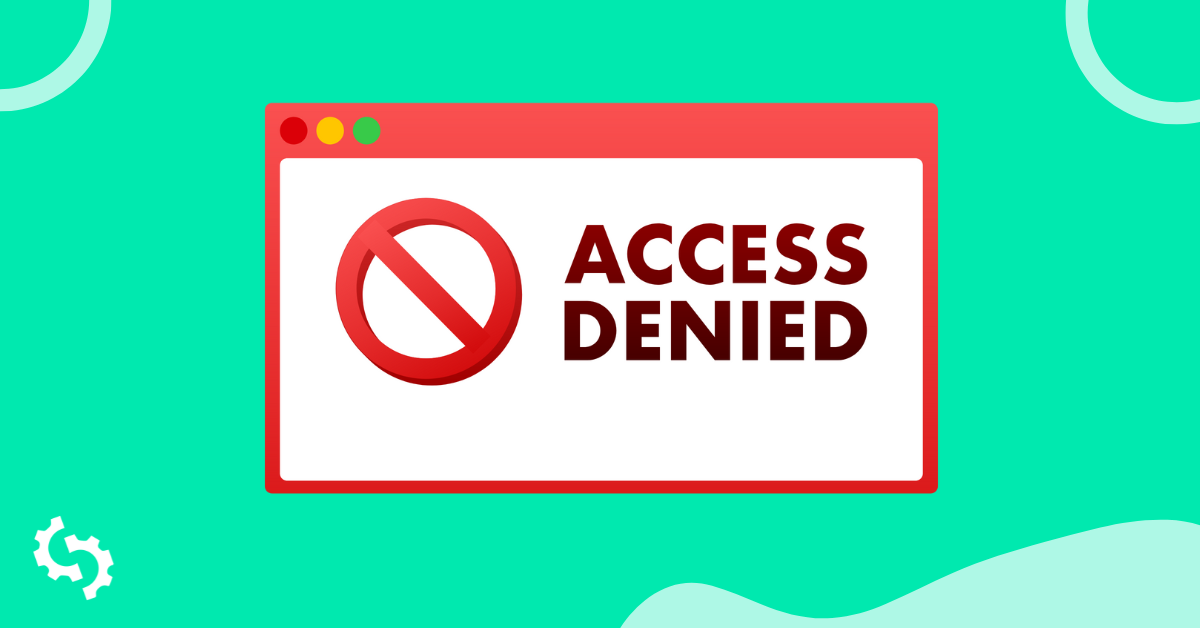
Multilingual SEO opens up your website to millions—or even billions—of new potential customers.
You know the rush you get when you're ranking for an important keyword? Multiply it.
Multilingual SEO could have your most powerful content ranking highly for keywords in 20 different languages.
And you can do it all without creating new content.
Instead, you'll just need to make your existing web pages and content accessible to new audiences.
Multilingual SEO: What Is It and When Should You Use It?
Multilingual SEO is the practice of translating existing content into other languages and optimizing that content for SEO to drive targeted search traffic.
The advantage of multilingual SEO is that you can quickly create content for other languages without having to spend resources and time to create new, original content.
Translating your existing content into multiple languages can be an easy way to significantly increase website traffic and get more customers.
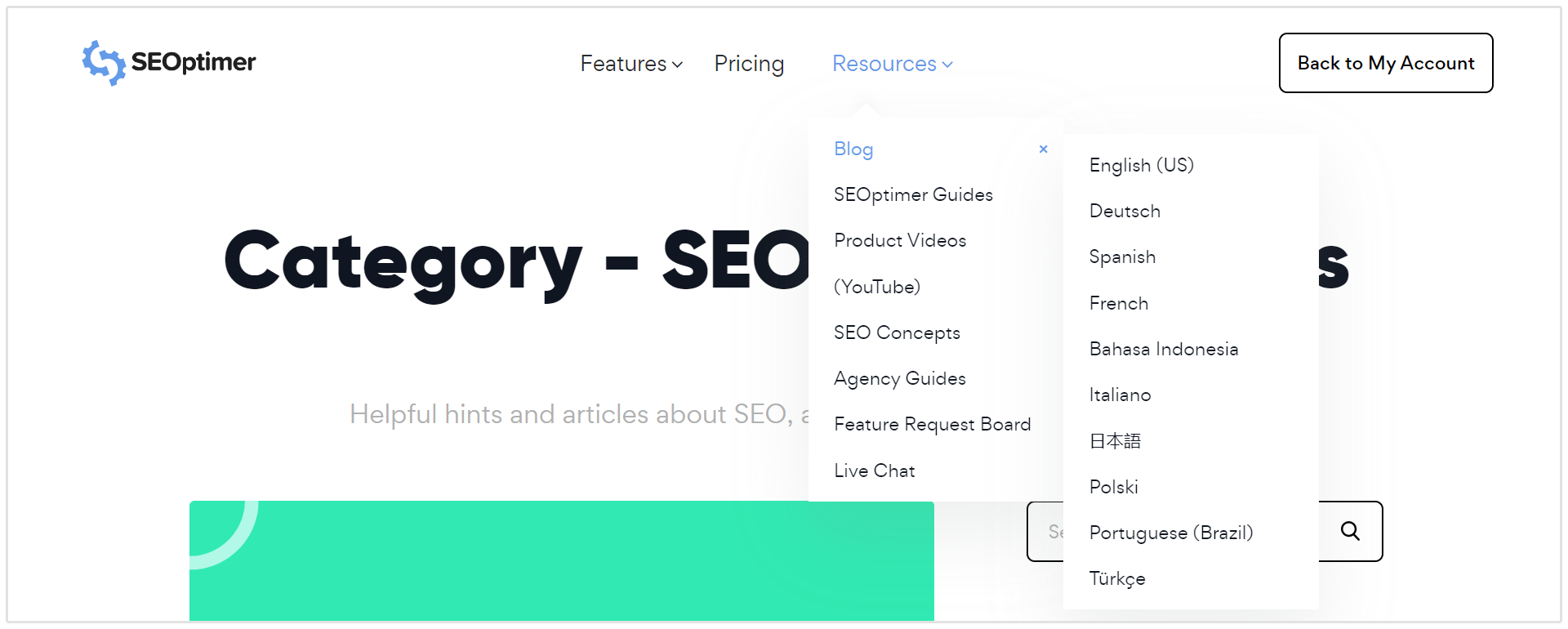
You already know what your best assets are. You're just making those accessible to people who speak other languages.
Multilingual SEO should not be confused with multiregional SEO, which is the practice of writing unique content for each language.
This is what you'd do to customize your content so it directly targets people in a certain region. It might even be necessary to do this in order to cater to cultural norms, regional needs or to offer sales during regional holidays.
Of course, it is possible for a site to be both multilingual and multiregional.
And consider this: People may speak the language but live in regions with a different official or majority language.
For example, consider the Chinese and Latin American diaspora in the United States. In this case, you don't necessarily need multiregional SEO to reach a massive new audience—just multilingual SEO.
That's why we're playing favorites with multilingual SEO today. Even if you plan to expand into multiregional SEO at some point, this is the best way to get started.
Plan Out Your Multilingual SEO Strategy
The first step in optimizing a site for multilingual SEO is to plan out exactly what you want to do.
1. Decide Which Languages to Target
The first step you should do is plan out which regions you want to target. Your business might benefit from targeting certain regions more than others.
How do you know what to target? Review your current site's analytics.
For example, let’s say that you own an e-commerce store in English, targeting people in the United States, but Google Analytics shows that you're getting tons of Spanish-speaking visitors (or visitors from Spanish-speaking countries).
You might also be getting lots of Spanish Facebook messages, emails from Spanish-oriented email addresses (example@hotmail.es) or calls from numbers with Latin American area codes.
If the above case, it's going to be a natural next step for you to target a Spanish-speaking audience. Even if your current audience is "getting by" because they speak enough English to navigate your site, consider the following points:
- Your website piques the interest of a Spanish-speaking community, but you're only reaching the members of that community who happen to speak English—which might be a pretty small percentage. You're losing visitors.
- The English speakers can't recommend the site to their friends and family who only speak Spanish. You're losing word-of-mouth recommendations.
- Even for the visitors who speak enough English to find you, your content and CTAs might not have the same impact that they would in these visitors' native language. You're losing conversions.
Pretty hard to pass up all those visitors, recommendations and conversions, right?
Beyond your own current audience, you can explore other possible target markets who are hungry for your content.
Translate your most important keywords into several other languages (either with Google Translate or the help of a human translator).
For example, I've found the German translation of "search engine optimization" quite easily with Google Translate.
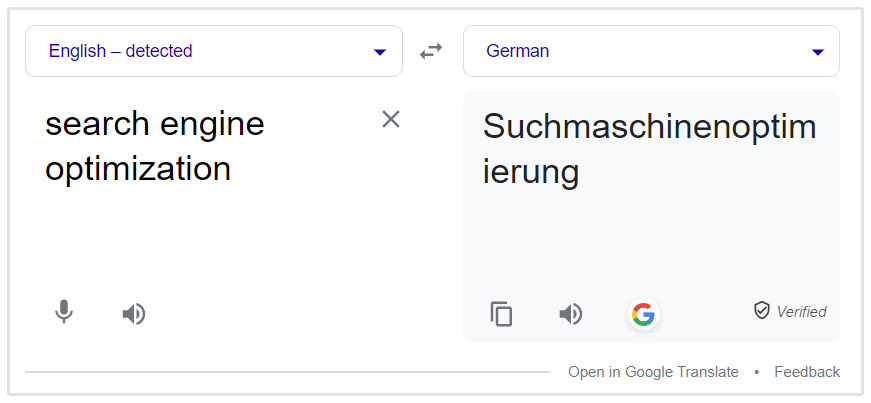
Then run them through the Google Adwords Keyword Planner.
Keep Location set to All Locations (remember, we're not going multiregional here) and set the Language to the new target language. Enter the translated keywords and see how much search traffic they get:
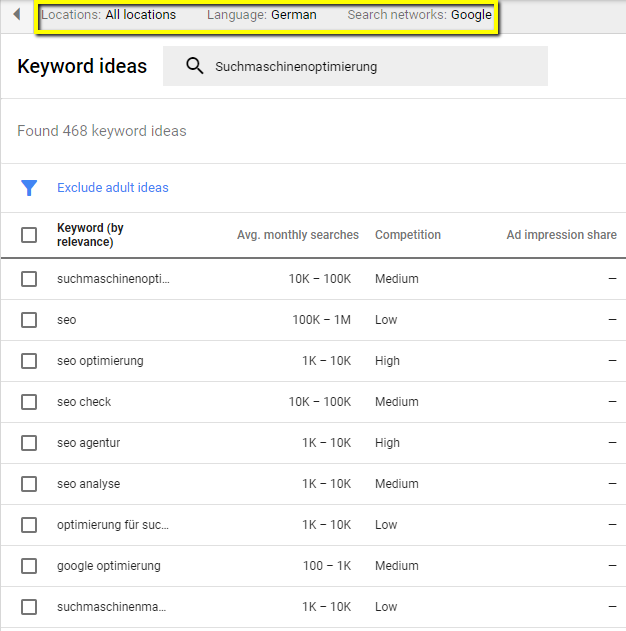
Not only am I seeing plenty of search traffic for the German keyword Suchmaschinenoptimierung, I'm getting plenty of additional ideas.
I'm also really liking the high volume of traffic but relatively low levels of competition. This looks like a promising market for me to expand into with my multilingual SEO strategy.
2. Decide on Whether to Use a Multilingual or Multiregional SEO Approach (or Both)
Multilingual SEO has the advantage of being much more simple and straightforward.
You don't have to localize content much, or consider big differences in cultural norms, regional standards and expectations.
You just need to translate from English to the target language. Boom. Done.
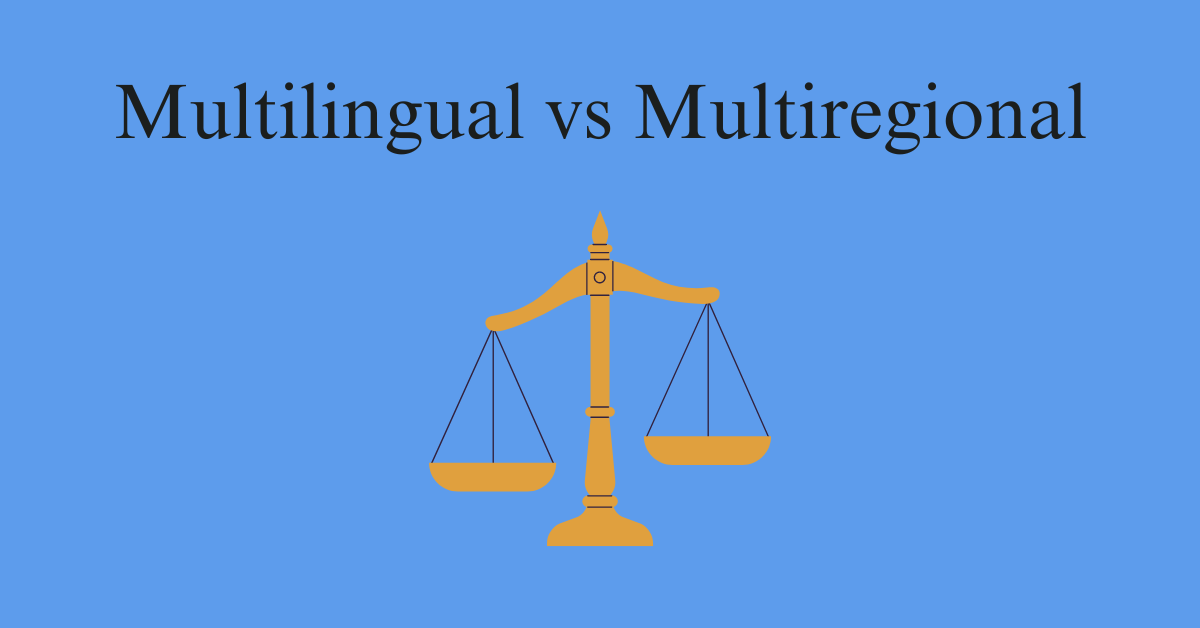
Of course, writing unique content as part of a multiregional SEO strategy has some advantages as well, for example:
- You can cover location-based keyword phrases, and employ local SEO strategies for potent content that converts very highly with the audience in that region.
- Regionally-preferred search engines (e.g., Yandex, Baidu, Naver) can be targeted.
- Local events, special dates and holidays can be targeted.
The extent to which you'll want to localize content depends on a bunch of different factors.
Resources
One is your translation and content creation resources: The skillset of a competent translator might be different from that of a competent content creator.
Being able to convey the message in a different language isn't always the same as writing up brand new content from scratch. To start, it's easier to go with straightforward translation and measure the response.
The Effectiveness of Existing Content
Hey, who knows? Your current content could be perfectly good enough for a global audience.
It might translate just fine, and not need additional localization apart from some basics like dates, times and currencies. Your CTAs might be equally powerful in English, Spanish, German and Hindi.
It's a good idea to translate what you've got first and, again, gauge the response. If it's not performing well, you might then consider additional localization.
The Actual Regions Your Visitors Live In
Do the people speaking the different languages all live in their home country? Or do many live abroad?
You might well be drawing Spanish speakers from all over the globe, not just Spanish-speaking countries.
Those Spanish speakers who love your product might be based in the United States, Canada and England.
The Chinese audience that can't get enough of your content might be running Google searches in San Francisco. Be sure to look deeply into visitor regions (separately from visitor language) before localizing content.
3. Decide Which Content to Translate
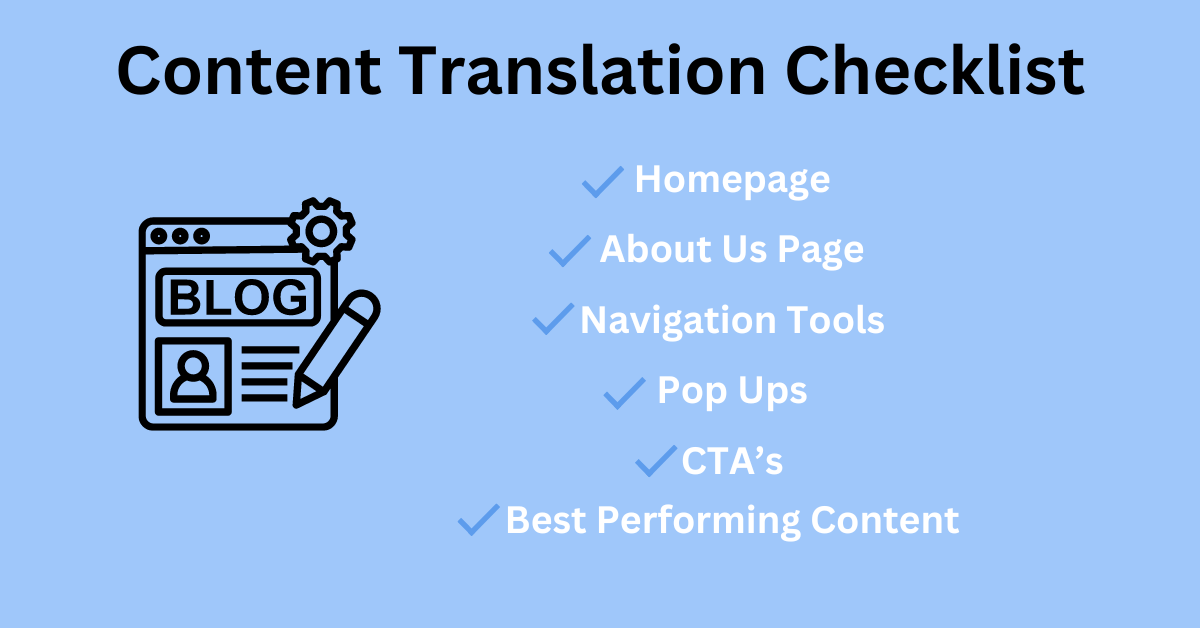
Yes, you might be ready to say "all of it!" at this point. And I'll back you up there: To create a consistent user experience, you should go ahead and translate all active pages on the site.
However, you may have some old outdated content that is no longer relevant and that content may not require translation.
You might also have some duds out there—pages and blog posts that are not your best quality, that don't rank highly and don't convert.
You can skip over stuff like this.
And, if you have to start somewhere, why not start with your best assets?
Prioritize the main pages that people will visit (home page, about pages, navigation tools, pop-ups and CTAs) and the best pages to drive SEO traffic and conversions.
Your best-performing English pages should be at the top of your list. Next, look for pages that correspond with high-volume keywords in the target language.
(If you're translating into German, do the keyword research as shown earlier in this guide, and see what's getting tons of searches in German.)
It's a given that keywords will have different search volumes when translated into a different language, so do your keyword research first.
Make the Big Domain Decisions
Another important step in preparing your business for multilingual SEO is selecting your domain structure.
The four most common structures for multilingual SEO are:
- separate top-level domains for each language
- sub-folders
- sub-domains
- URL parameters
If you're new to this, no worries, I'll define and walk you through each one.
4. Consider Multiple Top-level Domains (TLD)
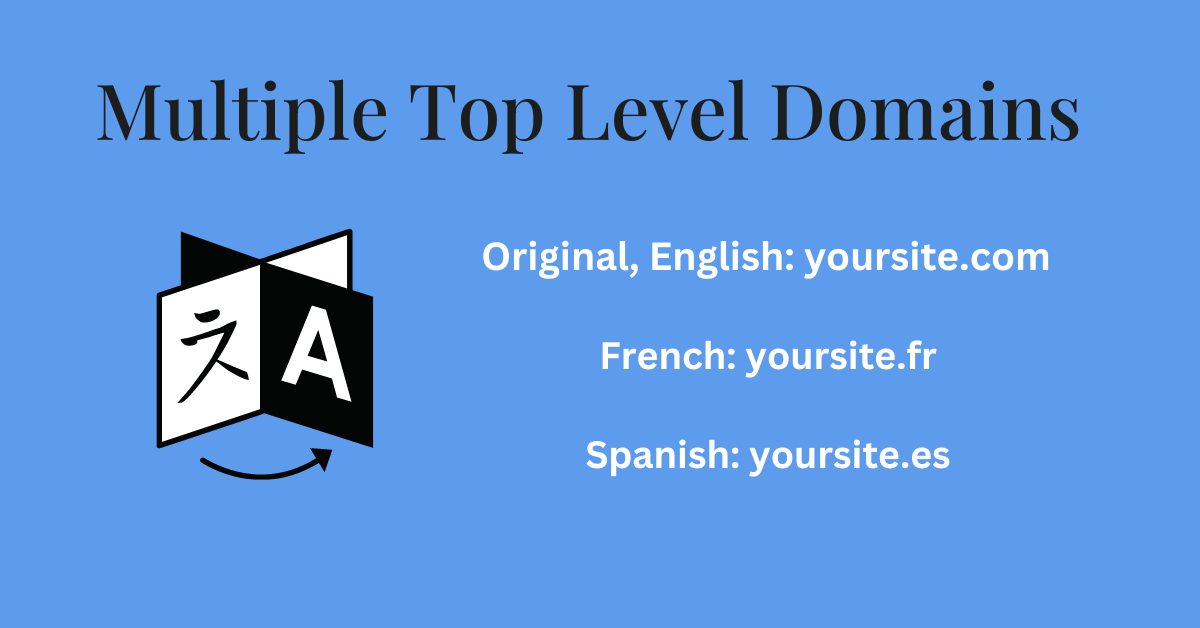
With multiple top-level domains, you use a separate domain for each language. For example:
Original, English: yoursite.com
French: yoursite.fr
Spanish: yoursite.es
Using multiple top-level domains has pros and cons to consider.
Cons
- cost of owning and managing multiple domains
- domain availability issues (if someone already owns one of your domains)
- increased technical difficulty in syncing up the content on the sites
- need to do SEO, and populate the pages, of each site separately
- less immediate connection between sites and content
Just to expand on that last bullet point, because it's a big one:
Generally, one big site can perform better than multiple smaller sites, as a big site will have more pages, more content, more related keywords and more internal links.
More, more, more looks good to Google when they're crawling your pages.
Those Google spiders will say, "hey, this site really has it all—they know everything about [topic] in all these languages—so let's rank it #1 for [topic]."
Pros
Owning multiple top-level domains does have some advantages.
- separating sites can make it easier to manage, especially if different teams are managing each site
- regions may have specific legal requirements for their terms of use or privacy policy (so it might be easier to implement separate legal policies for each region)
- targeted domain names can be created in each individual language (so people and search engines can tell from the domain name what language the site is going to be in)
Overall, I'd say the cons outweigh the pros, and there are better options (which we'll discuss next).
That said, using multiple top-level domains makes sense if each site is being managed separately, you have the resources to do marketing for multiple sites and each site has mostly unique content.
If the sites are set up as multiregional more than multilingual, and localized to the point of being two totally different sites, it can work. It's mainly recommended for huge companies with equally huge digital resources.
For example, McDonald's in the USA (mcdonalds.com) and McDonald's in Spain (mcdonalds.es) are two separate sites with separate management teams controlling each site.
The two sites could not possibly be more different. See for yourself below: The American site is on top, Spanish site is on the bottom.
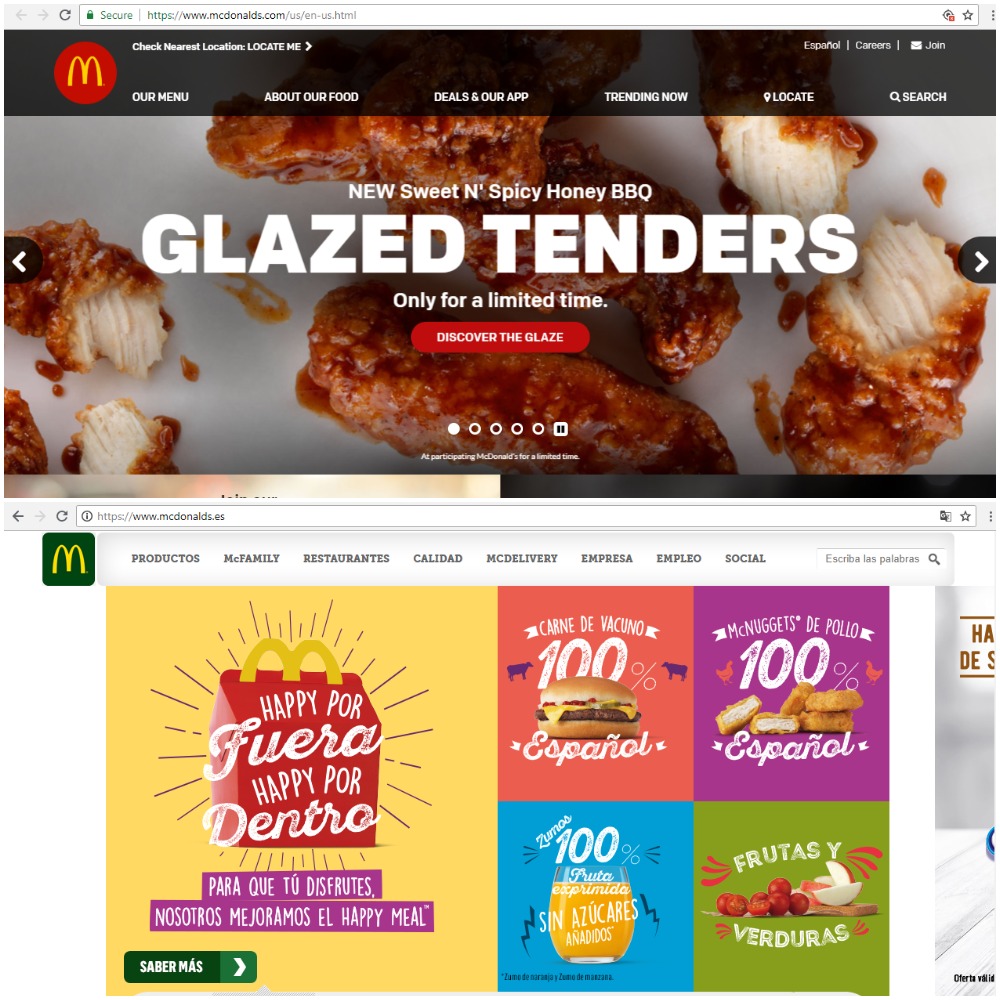
It's not just translated content: It's completely localized. They have almost nothing in common, except having the same company name. The web design, offers, currencies, dates, events—everything is 100% different on each site.
Also notice: The American site uses multilingual SEO! It can be translated directly into Spanish, for its USA-based, Spanish-speaking audience:

If you select the Spanish-language option, you're taken to mcdonalds.com/us/en-us.html, which is a carbon copy of the English site that's been translated into Spanish.
All of the same food products and sales are offered, since the Spanish-speaking audience is based in the same region.

This is an incredibly clear case study of how multiregional and multilingual strategies differ, who they target, and how they might be employed simultaneously.
5. Consider Subfolders/Subdirectories
Subfolders are easiest to set up for most CMS systems. These look like:
yoursite.com
yoursite.com/fr
yoursite.com/de
And looking back to our previous example, we can see that Mcdonald's using subfolders to separate the multilingual content for its US regional site:
mcdonalds.com/us/en-us.html
A subfolder setup can be an easy way to set your site up for multilingual SEO if you:
- have limited technical skills, want something simple
- want to save money by only having one domain and one web host
- are not planning to change web design and content dramatically between languages
For WordPress sites, you can use popular plugins like WPML and Yoast SEO to create multilingual versions of your site.
6. Consider Subdomains
Subdomains look like this:
yoursite.com
fr.yoursite.com
de.yoursite.com
They're not too difficult to set up, and you can use subdomains as an alternative to subfolders.
The subdomain setup can be useful if you like the pros of the multiple TLD arrangement, but want to set up separate sites for each language without the expense or hassle of managing multiple domains.
One disadvantage of using a subdomain structure versus a subfolder structure is that your subdomains are considered separate sites by search engines.
So, the subfolder structure is typically better for SEO because it makes your site appear as one big site instead of a bunch of separate sites.
7. Just Avoid URL Parameters
.png)
Okay, I know these are used by many, but I'm not going to tell you to consider them as an option, despite the advantages they might have.
Avoid using URL parameters, like these:
yoursite.com/?lang=fr
yoursite.com/?lang=es
They're not good for SEO, adding unnecessary technical language to all of your URLs. Search engines don't like this, and neither do your human visitors.
It looks messy and unprofessional. It's harder to read, remember and type into the search bar to visit again later.
Analytics tools also have greater difficulty tracking dynamic links.
So, use one of the other options above if possible.
Get to Know Hreflang Tags
When setting up your site for multilingual SEO, you'll need to use hreflang tags.
Hreflang tags are HTML tags that let search engines know which pages on your site are in each language.
8. Learn How to Add Hreflang Tags (Syntax and Example)
Hreflang tags (a.k.a. rel="alternate" hreflang="x") use the following format, where X is the language. You'll need to add this tag to your homepage to let the search engines know what parts of your site are for other regions:
<link rel="alternate" hreflang="X" href="http://X.yoursite.com/" />
For example, let's say you have a French version of your site on a subdomain at http://fr.yoursite.com. You will need to add the following code section before the closing head tag on your home page.
<link rel="alternate" hreflang="fr-fr" href="http://fr.yoursite.com/" />
You'll notice that the above example contains both a language and region code separated by a dash. You can find language codes on this page and region codes on this page.
Note that you can only target countries for regions.
For more detailed examples of how to implement the hreflang tag, check out these instructions from Google or this tutorial for more advanced implementations.
9. Add the Hreflang X-default Tag
.png)
If your site is multilingual, you may want to specify a default page to serve up using the x-default attribute. Just enter this code to each page on your site where you replace the href URL with your web page URL.
<link rel="alternate" href="http://yoursite.com/" hreflang="x-default" />
So for example, if you have a site that has both English and Spanish versions and someone from France visits, your site will display the English version by default.
10. Add Meta Language Tags for Bing
Google and Yandex use the hreflang tag, but Bing uses meta language tags instead. If you want to optimize your site for Bing as well, then you'ill need to add meta language tags to each page on your site.
The format for the meta language tag is as follows, and you should add this tag in the head section of every page to let search engines know what language that page is in.
<meta http-equiv="content-language" content="en-us">
The meta language tags use the same language and region codes as the hreflang tags.
Location Detection and Automatic Redirects
Some site owners will set up location detection and automatic redirects so that visitors from various regions will automatically see the correct content for their region.
The reason that people do this is that automatic redirects can reduce bounce rates and improve the visitor experience.
However, John Muller from Google recommended that location-based redirects should be avoided in most cases as it can negatively impact indexing and frustrate users.
Plus, we're talking about multilingual SEO, so let's stick to language targeting—it can be a lot more powerful than regional targeting.
11. Instead of Using Redirects Based on Location, Make Sure Visitors can Easily Find How to Switch Languages
Besides creating potential SEO issues, IP addresses don't necessarily indicate which country a person is in or what language they want to view your content in.
For example, a Spanish-speaking website visitor located in France might be frustrated by automatic redirection if he's wanting to view the site in English or Spanish.
Instead, make sure that the different versions of your site can be easily discovered by visitors. Adding some simple links in the header can make it easy for people to switch languages if they want to.
For example, you can select the language by hovering over the flag on the Water 2 Return site and using the drop-down menu.
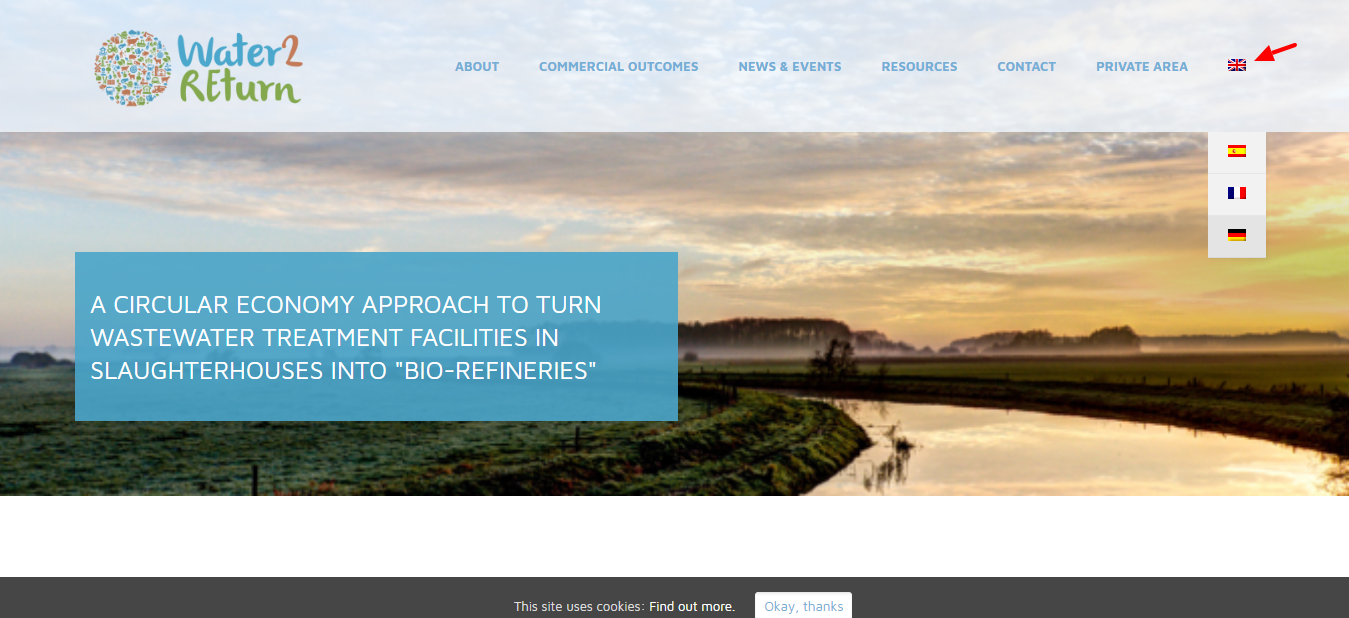
Create Content for Other languages
One of the most time-consuming steps in implementing multilingual SEO is creating content for other languages.
Since we're dealing with multilingual SEO rather than multiregional SEO, we'll simply translate most of the content into other languages rather than create unique content for each region.
This comes with its own unique considerations. Let's take a look at these.
12. Avoid Machine Translations and Block Automated Translations
It's possible to use software or plugins to automatically translate your site's content into different languages, but using machine translations isn't recommended.
Automated translations are often not accurate and can result in a poor user experience. If users can't understand your content or they see that it's not well written, then they'll leave your site quickly. This will negatively impact your SEO and conversions.
Another issue with automated translations is that your content might not be targeting the correct keywords in a different language.
If you do use automated translations for some reason, Google recommends blocking search engines from indexing those translated pages using the robots.txt file.
Automated translations can be seen as search engine spam in some cases as they rapidly create a lot of pages but don't necessarily provide a good user experience.
You might also consider having a native speaker start with the machine translation and smooth it out from there—but it's probably easier to have them start from scratch and translate using their brain, not a machine.
13. Get a Native Speaker to Translate
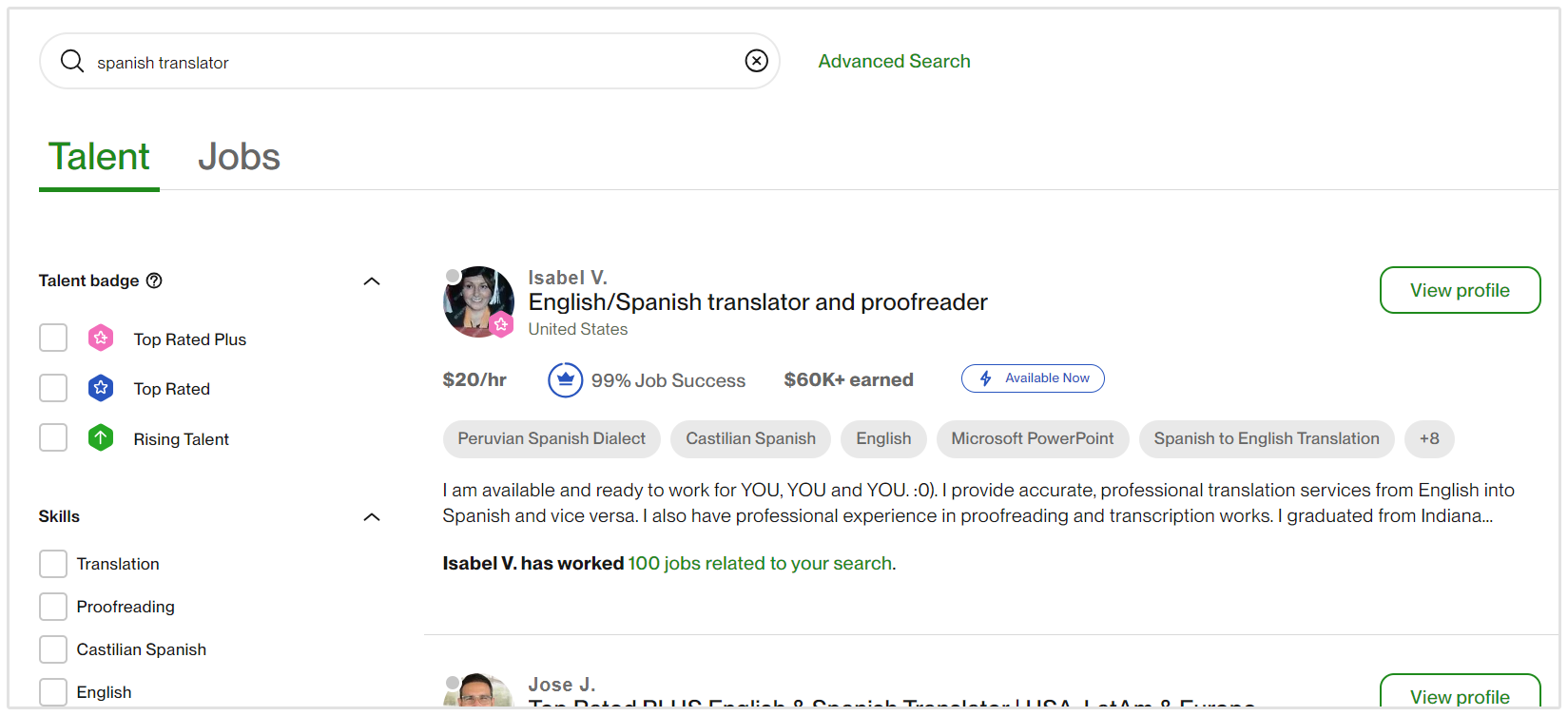
This is a must.
Don't even both with multilingual SEO if you don't plan to have a native speaker translating and reviewing the content.
Hire a bilingual native speaker (who knows English fluently and is a native in the target language) to translate your content into other languages for you.
A native speaker can take into account cultural differences as well as write content that visitors can easily read and understand.
The rule of thumb is to always translate into your native language, so don't hire a native English speaker who studied the target language in college.
It's much more effective to hire someone who's a native in the target language, and who also knows English fluently or at a native-level.
Sites like Upwork and Freelancer are well known, reputable and cater to a vast international workforce of professional translators, so you can find your ideal translator here.
14. Do Keyword Research in Other Languages
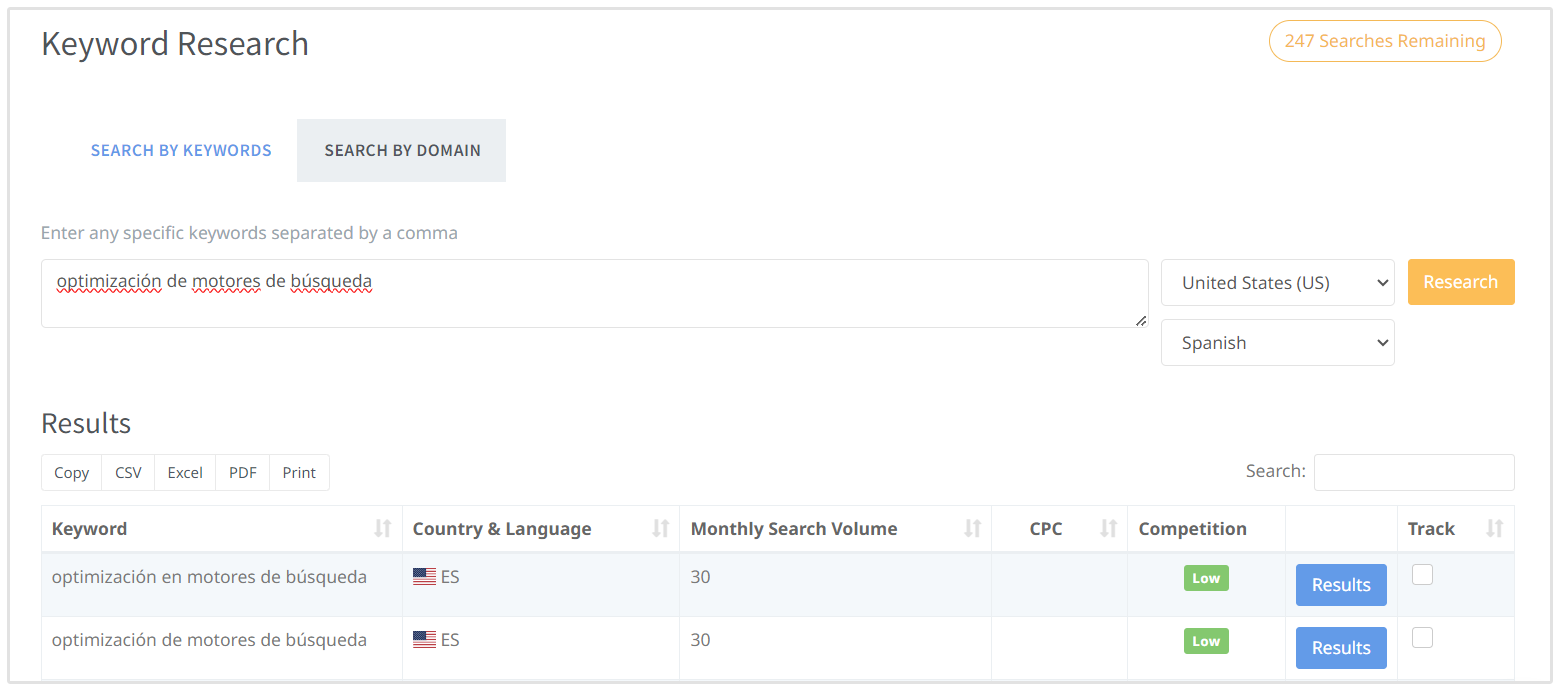
We've touched on this earlier, but it's something you and your translator will need to think about carefully during content translation and creation.
Asides from translating the content, you'll want to do keyword research in the target language(s). You can train your translator to do this for you so that they can optimize your site for international search while translating your content.
Luckily, keyword research in any language follows the same process, so your existing SEO knowledge applies here.
View this tutorial for more details on how to do keyword research, if you're unfamiliar, or share it with your translator.
Promoting Translated Content
You may want to consider doing promotion and link building when doing multilingual SEO. Link building for multilingual sites is not much different than link building for a regular site.
15. You Can Do Link Building to Further Boost Your Multilingual Pages
Once you're done translating your site to other languages, you may have opportunities to build links to your site's translated content.
Reach out to other bloggers and webmasters who are linking out to similar sites. Build relationships with them and let them know about your newly-translated content.
Look for international directories and review sites that you can get featured on now that you have your website translated to that language.
A backlink analysis of your international competitors can reveal such opportunities.
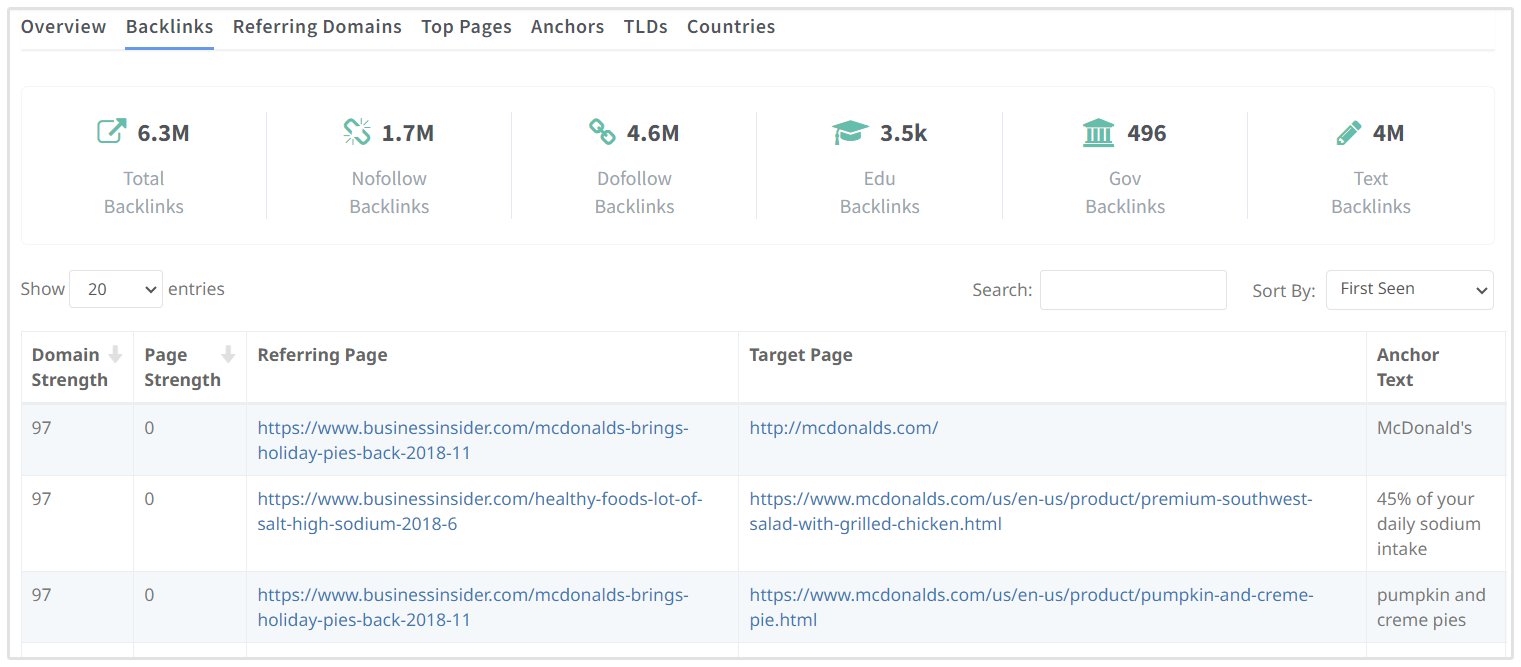
Internal linking is also important for SEO. You can link the different versions of your site by adding links in the header or footer.
These links can help visitors easily switch to a different language on your site as well as pass internal link juice to other pages on your site.
Of course, a lot of this work might involve knowledge of the foreign language. The bloggers who are linking to Spanish-language content might primarily be Spanish-speakers themselves.
In this case, you might look to your translator for assistance.
Alternatively...
16. Hire Marketers Who are Fluent in the Language
Rather than having your translator work on non-translation tasks, you might consider bringing someone on board to manage the marketing and outreach tasks in the target language.
They might use the same outreach tactics you would for your main, English site, or they might even recommend some unique strategies that work better in their target language.
Either way, you'll want to hire someone who speaks the language to do your outreach.
They need the right language and marketing skills to communicate with foreign bloggers and webmasters—a translator might not be adept at these tasks.
And if your foreign language skills or nonexistent or minimal, it's better that you hand this task over to someone who's fluent.
The fluency will allow your marketer to more easily build rapport with other webmasters, communicate clearly with them and be persuasive with their requests.
Again, try Upwork to find the right marketer. You might even hire someone to hire someone.
For example, one time I hired a guy in Romania to find a Romanian coder for me. Because he lived in Romania, he was able to post on job sites in his country and then screen potential candidates for me.
Tracking Results
After you've finished setting up your multilingual site, started translating the content and are implementing your promotional campaign, you'll also want to track results.
17. Use a Tool Like SEOptimer to Track Results and Find Link Building Opportunities
When you add a site to SEOptimer, you can actually specify your site's region and track keyword rankings relevant to that region and language:
![]()
Using the SEOptimer tool, you can also see if your competitors are getting links from sites in other countries. Sites located in regions you are targeting could be good prospects for link building outreach.
The TLD IP is clearly visible for each backlink in the dashboard, so you can see where those links are coming from, too.
With this kind of platform to track your multilingual and multiregional SEO results, you won't be in the dark—you'll have a much clearer idea of how your site's new global SEO strategy is performing.
Follow the steps above and you'll be ready to experience the benefits of multilingual SEO traffic in no time.



